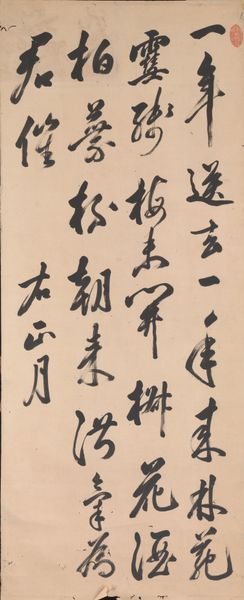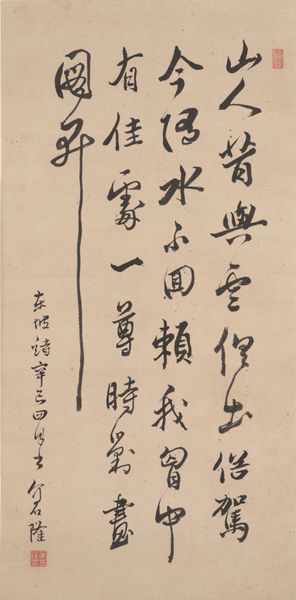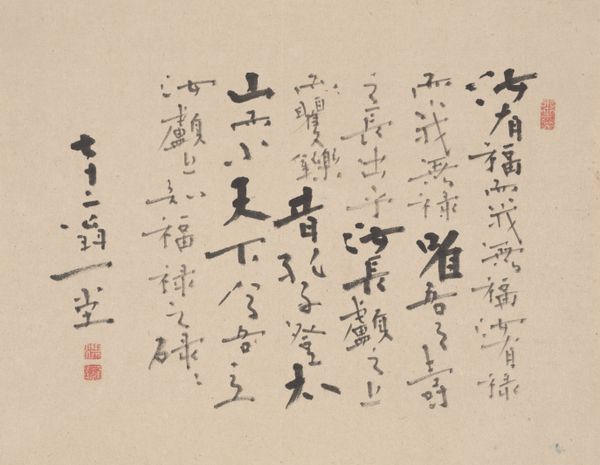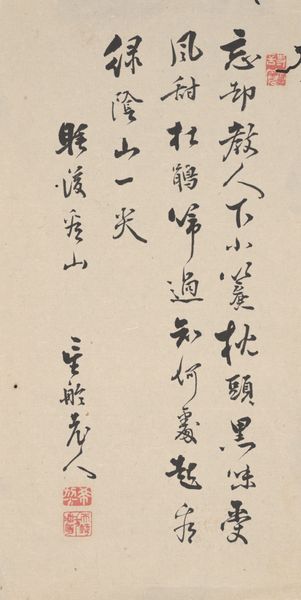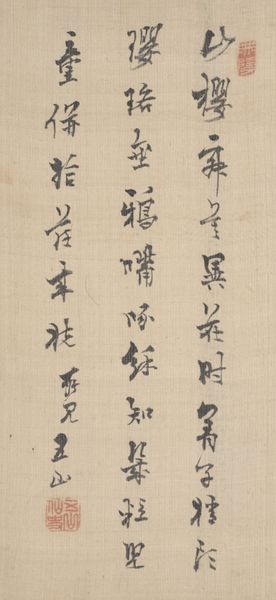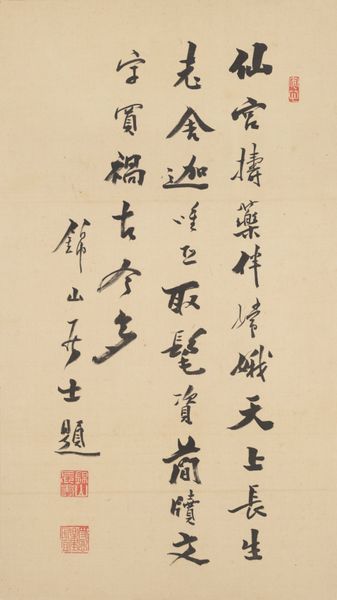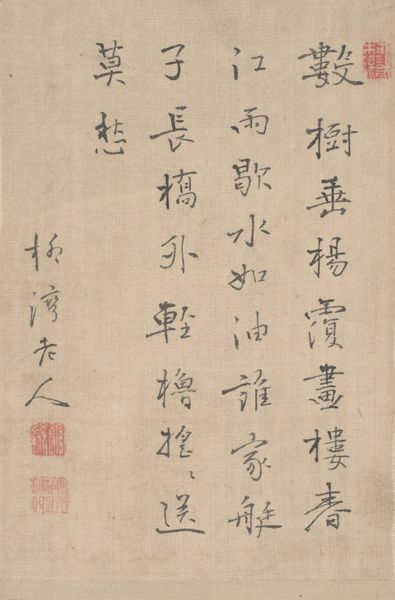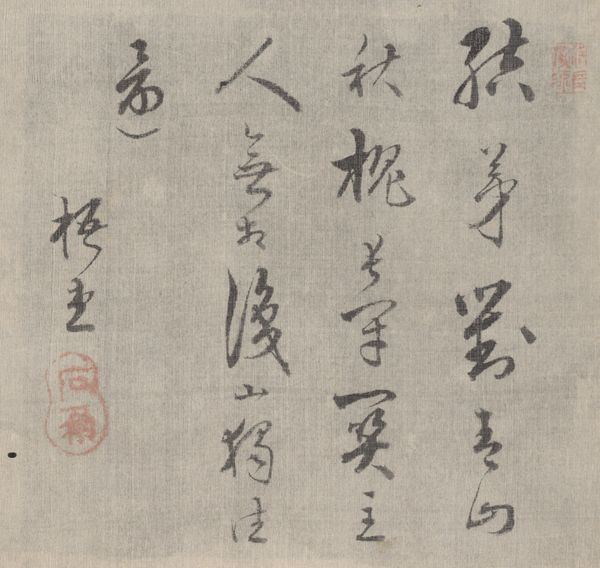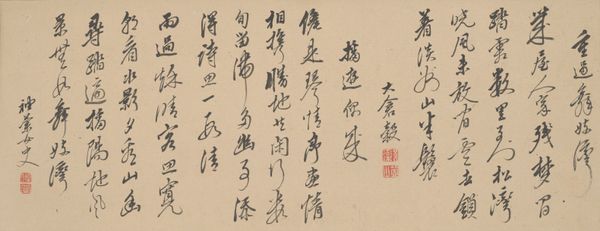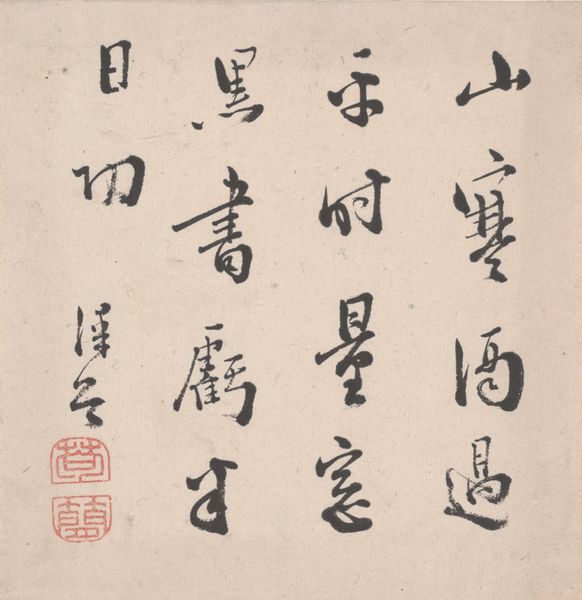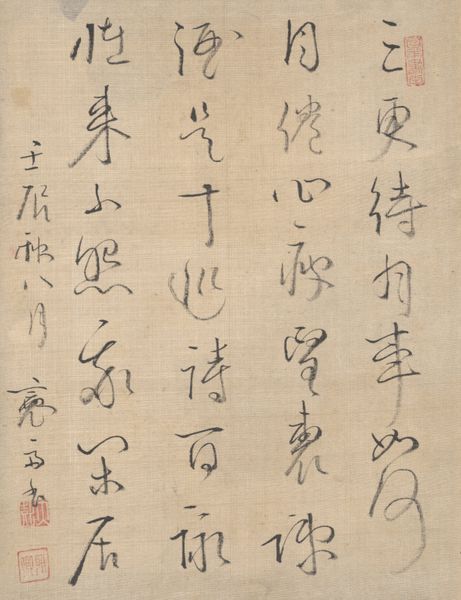
paper, ink
#
asian-art
#
paper
#
ink
#
calligraphy
Dimensions: 9 3/4 × 5 7/8 in. (24.77 × 14.92 cm) (sheet)11 5/16 × 7 1/2 in. (28.73 × 19.05 cm) (mount)
Copyright: Public Domain
Curator: Here we have "Autumn Waters," a work rendered in ink on paper. The artist, Kikuchi Gozan, likely created this hanging scroll sometime in the mid-19th century. Editor: The energy in these brushstrokes! The ink almost seems to dance on the paper, creating a visual rhythm. There's something so alive about the composition. Curator: The dynamism definitely speaks to the work’s historical context. Consider the sociopolitical landscape of 19th-century Japan; the late Edo period was a time of significant upheaval and reform, with artistic expression becoming increasingly individualistic and challenging established norms. Editor: Interesting. Looking at the individual characters, I'm drawn to their symbolic potential. The brushwork is so expressive, I can imagine the artist infusing meaning into each stroke beyond just the literal text. Could each character be interpreted as carrying cultural or personal memory? Curator: Precisely. Kikuchi Gozan was working within—and perhaps against—a very strict cultural system, as art and the act of creating was increasingly understood as an act of self-expression. Each word, each stroke, carries intentional weight and meaning within the tapestry of cultural revolution. Editor: I see connections between how artists negotiate cultural identities and expectations within different traditions—calligraphy versus portraiture for instance. "Autumn Waters" seems less like writing and more like emotion captured in visual form, distilled through culture, ready for an embodied reading from a future viewer. Curator: It’s remarkable to consider how this work continues to invite contemplation on our present cultural norms surrounding race, gender, and class hierarchies. Editor: I agree. It really makes one think about the continuity of symbols, their subtle evolution, and how their meaning echoes through time, even across cultures.
Comments
No comments
Be the first to comment and join the conversation on the ultimate creative platform.
